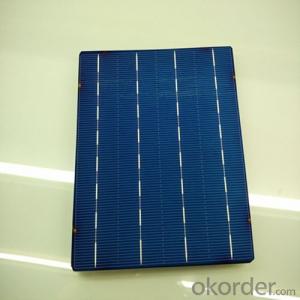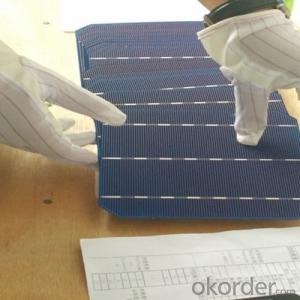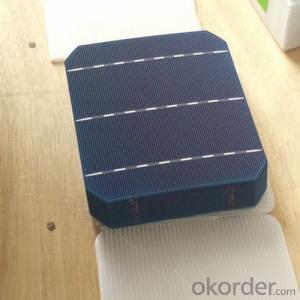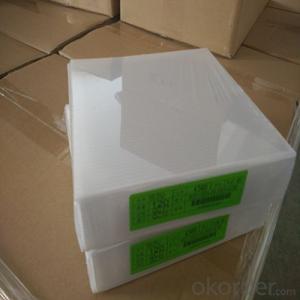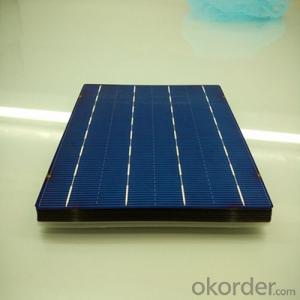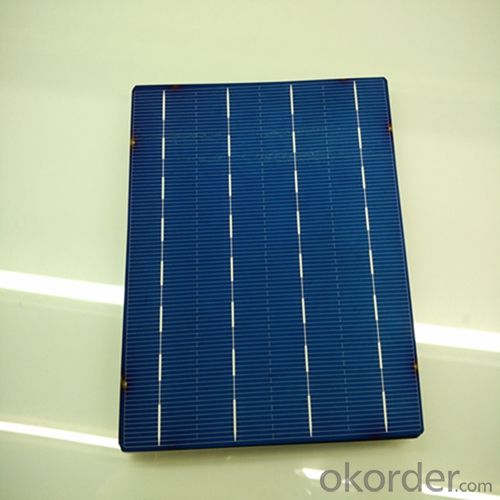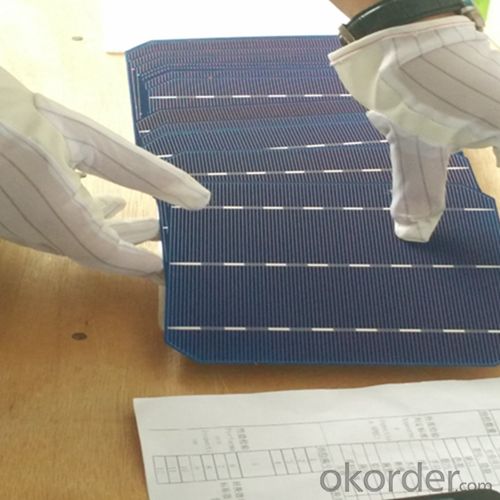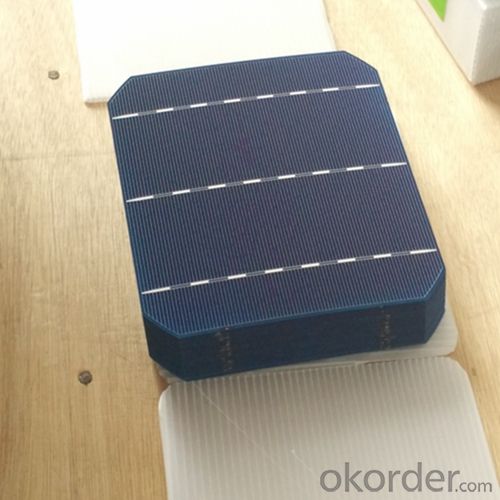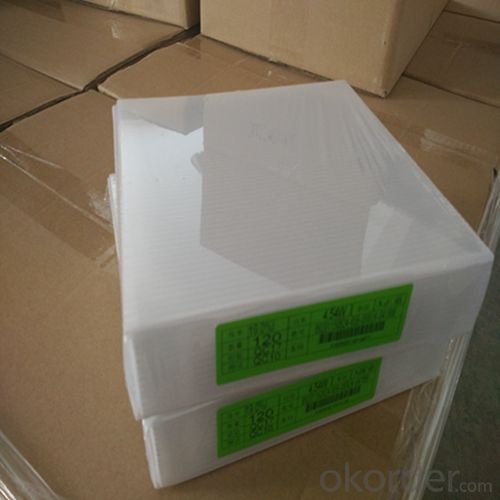Canadian Solar Cells - Poly 156 Solar Cells Class A Made in China
- Loading Port:
- Shanghai
- Payment Terms:
- TT OR LC
- Min Order Qty:
- 6500 watt
- Supply Capability:
- 6000000 watt/month
OKorder Service Pledge
OKorder Financial Service
You Might Also Like
The operation of a photovoltaic (PV) cell requires 3 basic attributes:
The absorption of light, generating either electron-hole pairs or excitons.
The separation of charge carriers of opposite types.
The separate extraction of those carriers to an external circuit.
In contrast, a solar thermal collector supplies heat by absorbing sunlight, for the purpose of either direct heating or indirect electrical power generation from heat. A "photoelectrolytic cell" (photoelectrochemical cell), on the other hand, refers either to a type of photovoltaic cell (like that developed by Edmond Becquerel and modern dye-sensitized solar cells), or to a device that splits water directly into hydrogen and oxygen using only solar illumination.Characteristic of Mono 156X156MM2 Solar Cells
You are gaining energy independence - add battery backup power for even greater energy security
The cost of electricity is only going to rise – insure against that rising cost
Adaptive cells change their absorption/reflection characteristics depending to respond to environmental conditions. An adaptive material responds to the intensity and angle of incident light. At the part of the cell where the light is most intense, the cell surface changes from reflective to adaptive, allowing the light to penetrate the cell. The other parts of the cell remain reflective increasing the retention of the absorbed light within the cell.[67]
In 2014 a system that combined an adaptive surface with a glass substrate that redirect the absorbed to a light absorber on the edges of the sheet. The system also included an array of fixed lenses/mirrors to concentrate light onto the adaptive surface. As the day continues, the concentrated light moves along the surface of the cell. That surface switches from reflective to adaptive when the light is most concentrated and back to reflective after the light moves along
Mechanical data and design
Format | 156mm x 156mm±0.5mm |
Thickness | 210μm±40μm |
Front(-) | 1.5mm bus bar (silver),blue anti-reflection coating (silicon nitride) |
Back (+) | 2.5mm wide soldering pads (sliver) back surface field (aluminium) |
Temperature Coefficient of Cells
Voc. Temp.coef.%/K | -0.35% |
Isc. Temp.coef .%/K | +0.024%/K |
Pm.Temp.coef. %/K | -0.47%/K |
Electrical Characteristic
Effiency(%) | Pmpp(W) | Umpp(V) | Impp(A) | Uoc(V) | Isc(A) | FF(%) |
18.35 | 4.384 | 0.526 | 8.333 | 0.63 | 8.877 | 78.39% |
18.20 | 4.349 | 0.526 | 8.263 | 0.63 | 8.789 | 78.54% |
18.05 | 4.313 | 0.525 | 8.216 | 0.63 | 8.741 | 78.32% |
17.90 | 4.277 | 0.524 | 8.161 | 0.625 | 8.713 | 78.04% |
17.75 | 4.241 | 0.523 | 8.116 | 0.625 | 8.678 | 77.70% |
17.60 | 4.206 | 0.521 | 8.073 | 0.625 | 8.657 | 77.36% |
17.45 | 4.170 | 0.519 | 8.039 | 0.625 | 8.633 | 76.92% |
17.30 | 4.134 | 0.517 | 8.004 | 0.625 | 8.622 | 76.59% |
17.15 | 4.096 | 0.516 | 7.938 | 0.625 | 8.537 | 76.80% |
17.00 | 4.062 | 0.512 | 7.933 | 0.625 | 8.531 | 76.18% |
16.75 | 4.002 | 0.511 | 7.828 | 0.625 | 8.499 | 75.34% |
16.50 | 3.940 | 0.510 | 7.731 | 0.625 | 8.484 | 74.36% |
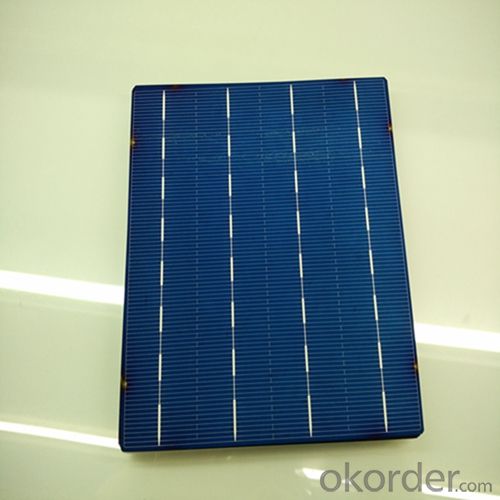
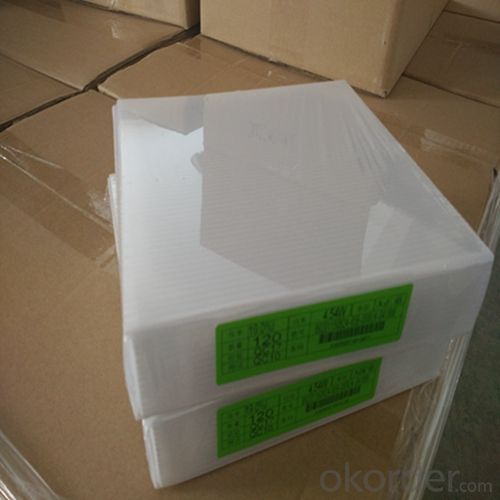
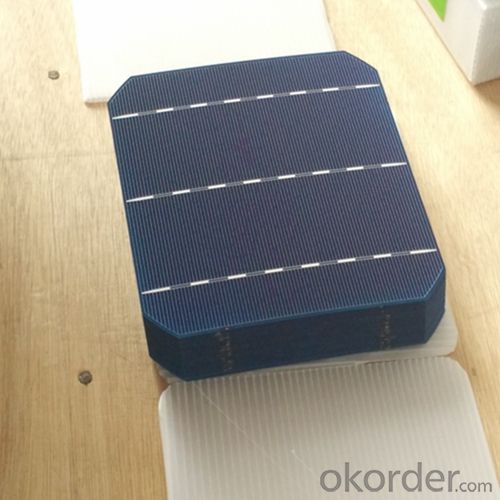
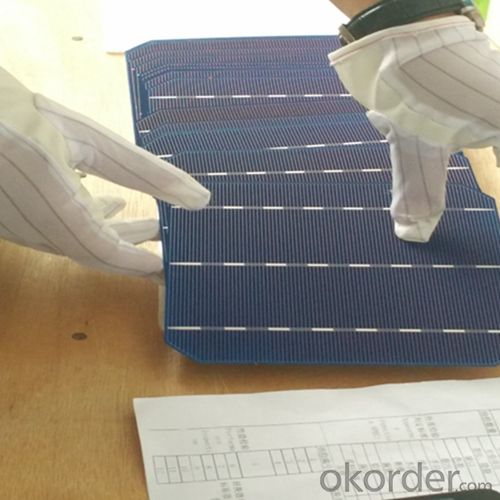
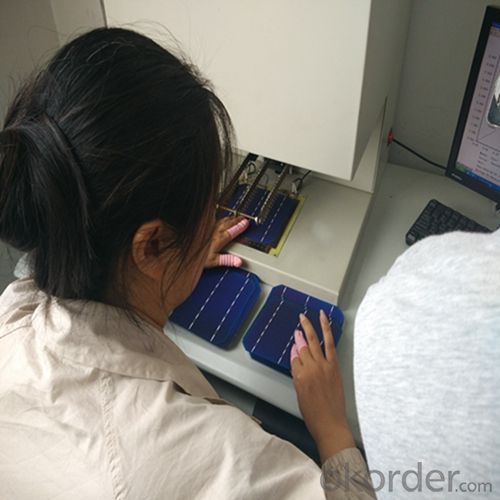 FAQ
FAQ
Q: What price for each watt?
A: It depends on the quantity, delivery date and payment terms, generally Large Quantity and Low Price
Q: What is your size for each module? Can you tell me the Parameter of your module?
A: We have different series of panels in different output, both c-Si and a-Si. Please take the specification sheet for your reference.
Q: What is your size for each module? Can you tell me the Parameter of your module?
A: We have different series of panels in different output, both c-Si and a-Si. Please take the specification sheet for your reference.
- Q: How do solar cells perform in regions with frequent thunderstorms?
- Solar cells are not directly affected by thunderstorms themselves. However, frequent thunderstorms in a region can lead to reduced sunlight exposure, which may affect the overall performance of solar cells.
- Q: How do solar cells contribute to reducing greenhouse gas emissions?
- Solar cells contribute to reducing greenhouse gas emissions by converting sunlight directly into electricity without any emissions of greenhouse gases. This renewable energy source replaces the need for fossil fuels, such as coal and natural gas, which release carbon dioxide and other harmful gases when burned for electricity generation. By harnessing the power of the sun, solar cells provide a clean and sustainable alternative, helping to mitigate climate change and reduce our carbon footprint.
- Q: How do solar cells perform in areas with high levels of humidity?
- Solar cells can still perform efficiently in areas with high levels of humidity. However, excessive moisture in the air can cause a slight decrease in their overall performance due to increased resistive losses. It can also lead to the formation of water droplets on the surface of the solar panels, which can temporarily block sunlight and reduce energy production. To mitigate these effects, solar panels are typically designed to be water-resistant and have anti-reflective coatings to prevent water droplet formation. Overall, while humidity can have a minor impact on solar cell efficiency, it does not significantly hinder their ability to generate electricity.
- Q: How do solar cells perform in areas with high levels of dust?
- Solar cells tend to perform less efficiently in areas with high levels of dust. The dust particles can accumulate on the surface of the solar panels, reducing their ability to absorb sunlight and convert it into electricity. This buildup can lead to a decrease in energy production and overall performance of the solar cells. Regular cleaning and maintenance of the panels are necessary to mitigate the impact of dust and ensure optimal efficiency.
- Q: Briefly explain why solar cells are made into components
- Components are made in order to better protect the crystalline silicon material is not destroyed, the components generally by the tempered glass, EVA, battery, TPT, aluminum frame and other materials, so that the components, the service life of up to 20 years The
- Q: Can solar cells be used in vehicles?
- Yes, solar cells can be used in vehicles. They can be integrated into the design of cars, buses, boats, and even airplanes to convert sunlight into electricity, providing power for various vehicle functions such as charging batteries, running onboard systems, or even powering the entire vehicle.
- Q: How do solar cells perform in desert environments?
- Solar cells perform exceptionally well in desert environments due to the high levels of sunlight and low humidity. The arid conditions and lack of cloud cover ensure that solar panels receive maximum exposure to sunlight, resulting in increased energy production. Additionally, the dry climate helps prevent dust and debris from accumulating on the panels, minimizing any potential efficiency losses.
- Q: How do solar cells perform in areas with high levels of snowfall?
- Solar cells typically do not perform optimally in areas with high levels of snowfall. The accumulation of snow on the surface of the cells can block sunlight and reduce their efficiency. However, advancements have been made to design solar panels with self-cleaning features or tilted angles that can help shed snow. Additionally, regular maintenance and clearing of snow can help ensure the continued performance of solar cells in such areas.
- Q: Can solar cells be used for powering remote surveillance cameras?
- Yes, solar cells can be used for powering remote surveillance cameras. Solar cells capture sunlight and convert it into electricity, which can then be used to power various devices, including surveillance cameras. This makes solar-powered surveillance cameras a sustainable and cost-effective option for remote locations where access to electrical grids may be limited or non-existent.
- Q: Solar cells and the difference between ordinary batteries. Why is the solar cell is converted into electrical energy, zinc battery is what is converted into chemical energy
- Ordinary batteries have a certain life, can not be stored for too long, or the power will slowly run out of solar cells do not exist chemical failure, can be long-term preservation.
Send your message to us
Canadian Solar Cells - Poly 156 Solar Cells Class A Made in China
- Loading Port:
- Shanghai
- Payment Terms:
- TT OR LC
- Min Order Qty:
- 6500 watt
- Supply Capability:
- 6000000 watt/month
OKorder Service Pledge
OKorder Financial Service
Similar products
Hot products
Hot Searches
Related keywords
